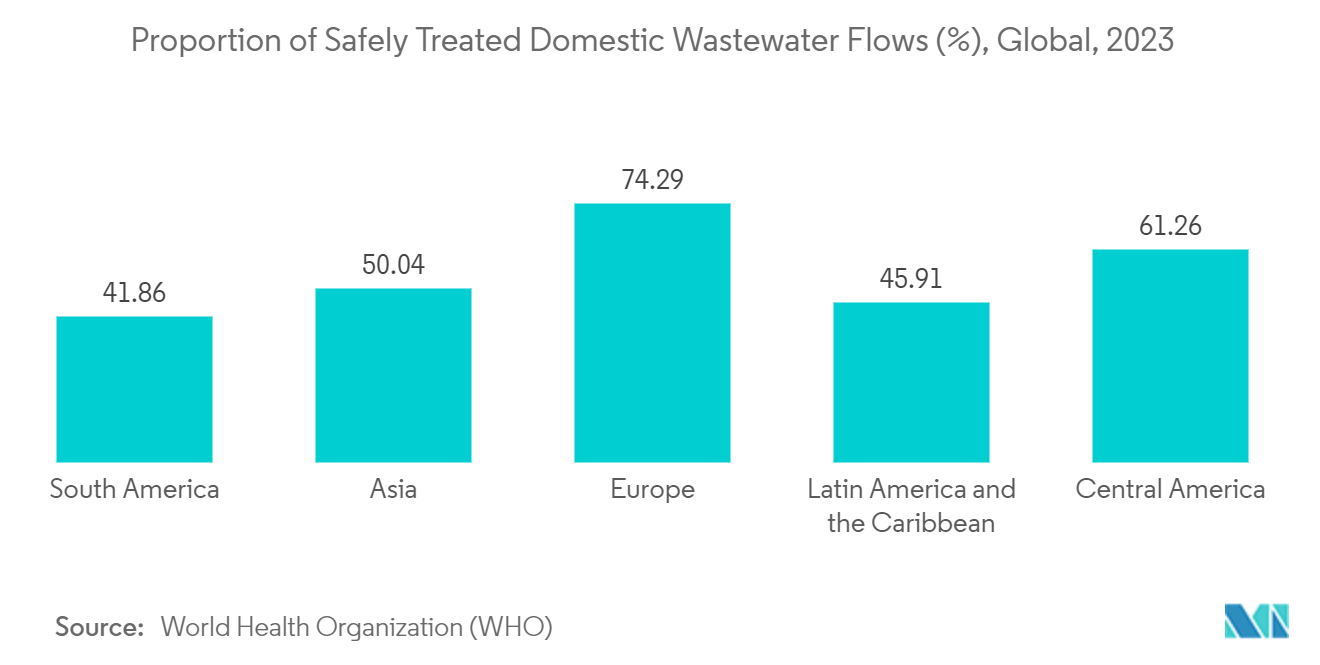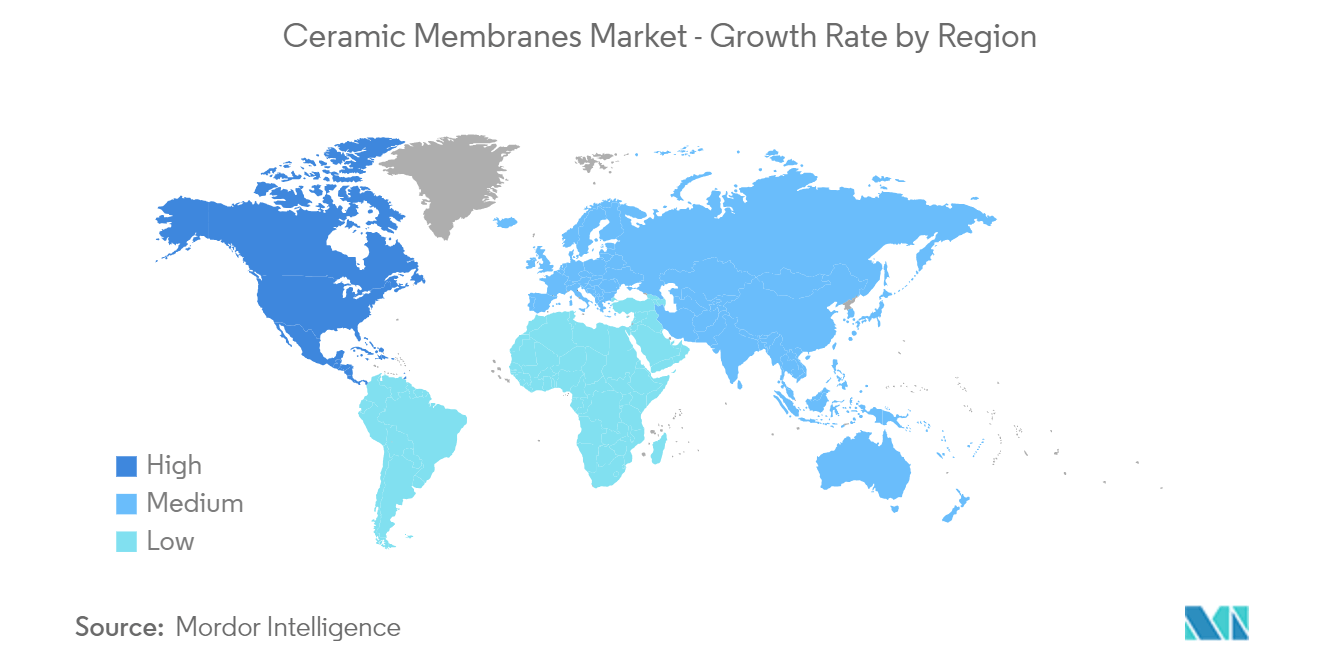Market Trends of Ceramic Membranes Industry
The Water and Wastewater Treatment Segment to Dominate the Market
- Ceramic membranes dominate the water and wastewater treatment landscape, outshining traditional methods. Their allure lies in unparalleled chemical stability, robust mechanical strength, and resistance to extreme temperatures. Moreover, the potent antimicrobial properties and notable antibacterial effects underscore the efficacy of water treatment.
- Volumes of wastewater are increasing due to population growth, improved water supply, enhanced living standards, and economic growth.
- Global wastewater output stands at 380 billion cubic meters annually, with projections indicating a 24% rise by 2030 and a 51% surge by 2050.
- As per the United Nations Water, high-income countries treat about 70% of their wastewater, upper-middle-income nations treat only 38%, and lower-middle-income counterparts manage 28%. In stark contrast, the treatment rate plunges to a mere 8% in low-income countries.
- North America and Europe lead in wastewater treatment, ensuring the safe treatment of 86.5% of household wastewater. However, the scenario is starkly different in Sub-Saharan Africa and Central and Southern Asia, where the safe treatment rate is under 25%.
- China, grappling with a significant water scarcity challenge, holding 7% of the world's freshwater for a population that constitutes 20% of the global total, has unveiled ambitious plans. The nation aims to bolster its wastewater treatment capacity by constructing facilities capable of handling 20 million cubic meters daily over the next five years, a move poised to drive up demand for ceramic membranes.
- To safeguard its water resources, South Korea has rolled out the Water Environment Management Master Plan, which will span from 2016 to 2025. The plan targets maintaining high water quality in 85% of the nation's water bodies to invigorate water treatment endeavors. Presently, South Korea boasts approximately 698 operational sewage treatment facilities.
- Germany emerges as the water treatment leader in Europe, particularly emphasizing its northern regions. The nation's private households, industries, and trade sectors generate over five billion cubic meters of sewage water annually.
- Germany boasts Europe's most extensive industrial wastewater treatment segment, comprising nearly 3,000 treatment plants catering to 12,000 discharging companies. The country treats approximately 920 million cubic meters of industrial wastewater each year before its safe discharge. Impressively, almost 99% of Germany's populace enjoys direct access to wastewater treatment facilities, as highlighted by the Federal Ministry.
- Germany generates more than five billion cubic meters of sewage water annually from private households, industry, and trade. It also has Europe's largest industrial wastewater treatment market, treating over 920 million cubic meters of industrial wastewater annually before it is released into the environment.
- As of January 2024, Gradiant’s H+E Group won a contract in Germany to build a water treatment facility for one of the largest semiconductor facilities. The project is expected to commence immediately and be completed later in 2025.
- Thus, all the factors mentioned above are likely to increase the demand for ceramic membranes during the forecast period.

North America is Expected to Dominate the Market During the Forecast Period
- North America is the largest market for ceramic membranes, mainly due to the large consumption of pharmaceuticals, food and beverage, water and wastewater treatment, and other industries.
- As per the United Nations Water, high-income countries treat about 70% of their wastewater. In contrast, upper-middle-income nations treat only 38%, while lower-middle-income counterparts manage 28%. The situation is dire in low-income countries, where a mere 8% of wastewater is treated.
- The United States boasts an extensive infrastructure, with nearly 153,000 public drinking water systems and more than 16,000 publicly owned wastewater treatment systems. These systems collectively provide clean and potable water to over 80% of the US population, while about 75% have their sewage treated.
- Mexico stands out in North America with its extensive water treatment network, featuring 874 potable water treatment plants, 2,639 wastewater treatment plants, and 435 desalination facilities. It solidifies its status as the region's manufacturing hub.
- Ceramic membranes have widespread application in the food and beverage segment, excelling in separation, clarification, and purification tasks due to their high efficiency and chemical stability.
- Moreover, ceramic membrane technology shines in winemaking, aiding in wine clarification, sterilization, and stabilization. This preserves the wine's flavor and streamlines the winemaking process, cutting costs.
- According to the International Organisation of Vine and Wine (OIV), the United States produced 10.2% of the world's wine in 2022.
- All the factors above are expected to enhance the demand for ceramic membranes during the forecast period.


